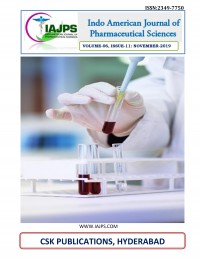
TITLE:
RETROSPECTIVE ANALYSIS OF SEASONAL VARIANCE OF CANDIDA VAGINITIS IN XINJIANG, CHINA
AUTHORS:
Yasir Ali Butt, Xiao Dong-Wang, Hadiliya-Hasimu, Qazi Syed Irfanullah Shah, Palida Abulizi
ABSTRACT:
Candida vaginitis is an ecology-related imbalancement of the vaginal tract microbiota that affects most of the ladies of nearly reproductive age. This research-based study was performed among 2661 women having age range between 9 to 85 years that were registered at the first affiliated hospital of Xinjiang province of China from January 2017 to December 2017. The aim of the study was to assess the prevalence of Candida vaginitis, risk factors involved with it and to analyze the type of yeast associated with Candida vaginitis and BV (Bacterial vaginitis). The overall prevalence of Candida vaginitis was increased in the second half of the year among the patients. Douching was statistically related to CV. Also, CV was significantly associated with consistency, odor, and amount of abnormal vaginal discharge. Contraceptives users on anatomical sites were found more prone to CV than those who did not use contraceptives on anatomical sites. Fungal microscopy, trichomonas, Neisseria gonorrhea, lactobacillus, heterobacillus, Bv sialidase, coagulase, staphylococcus aureus was associated with CV and out of those heterobacillus & Lactobacillus spp. were the predominant organisms. The higher prevalence of CV among symptomatic patients indicates interventions should be applied to reduce the incidence of stillbirth, abortion, and sterility [7][4].
FULL TEXT
Cover Page














